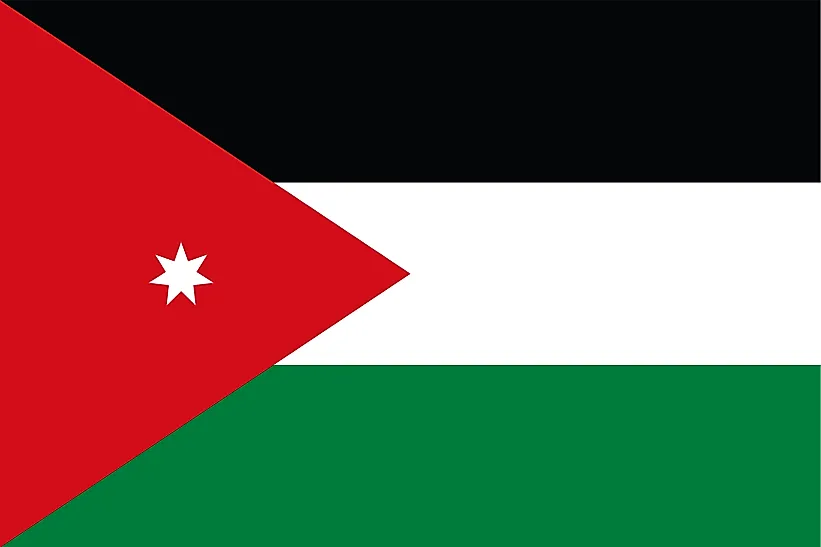
Jordan
| 대륙 | 아시아 |
| 자본 | 암만 |
| 인구 | 8,185,384 |
| GDP | $86.19억 |
| 1인당 GDP | $11,100 |
| 다이얼링 코드 | +962 |
| ISO 코드(2글자) | JO |
| ISO 코드(3글자) | JOR |
조던 소개
고대 역사와 현대적 환대가 공존하는 나라 요르단에 오신 것을 환영합니다. 약 1,020만 명의 인구가 89,342㎢에 거주하는 요르단은 놀라운 고고학적 유산과 다양한 풍경이 어우러져 고대와 현대 중동을 잇는 가교 역할을 하고 있습니다.
지리적 특징과 자연의 아름다움
요르단의 지형은 사해의 세계에서 가장 낮은 지점인 요르단 계곡부터 동부의 사막 고원까지 매우 다양합니다. 요르단은 와디럼의 붉은 모래사장과 북부의 산악 지역 등 극적인 풍경을 자랑합니다.
요르단 강 계곡, 해발 420미터의 사해, 독특한 기암괴석이 있는 광활한 사막 지역 등 다양한 풍경이 펼쳐져 있습니다. 요르단의 다양한 지형 덕분에 서쪽의 지중해부터 동쪽의 사막까지 다양한 기후대가 형성되어 있습니다.
요르단에서 가장 큰 자연 보호 구역인 다나 생물권 보호구역과 지구상에서 가장 낮은 자연 보호 구역인 무지브 생물권 보호구역이 보호 지역으로 지정되어 있습니다. 요르단의 지리적 다양성은 극한의 조건에 적응한 독특한 생태계를 지원합니다.
문화 유산과 전통
요르단 문화는 고대 문명과 베두인 전통이 조화를 이루고 있습니다. 요르단의 유산에는 세계 신 7대 불가사의 중 하나인 페트라와 같은 놀라운 고고학 유적지와 수많은 로마, 나바테아, 이슬람 유적지가 포함되어 있습니다.
전통 예술에는 독특한 베두인 직조, 도자기, 장신구 제작이 포함됩니다. 음악과 춤 전통, 특히 댑케 민속춤은 문화적 정체성과 공동체 유대를 표현하며, 전통 수공예는 고대 기술을 보존하고 있습니다.
요르단 요리는 국가 요리인 만사프를 비롯해 전통 중동 요리에 지역적 특색을 가미한 요리를 선보입니다. 베두인 문화에 뿌리를 둔 요르단의 환대 전통은 여전히 사회 생활의 특징입니다.
역사 여행
요르단의 역사는 고대 문명부터 다양한 제국을 거쳐 1946년 현대 국가가 수립되기까지 이어져 왔습니다. 요르단의 영토에는 성경에 언급된 유적지, 로마 도시, 십자군 성, 초기 이슬람 기념물 등이 있습니다.
중요한 시기에는 나바테안 왕국, 로마 통치, 이슬람 칼리프, 현대 하셰미트 군주제가 있습니다. 지역 정치에서 온건 세력으로서의 요르단의 역할은 중동에서 안정적인 존재로 발전하는 데 큰 영향을 미쳤습니다.
현대 경제 환경
오늘날 요르단 경제는 서비스업, 관광업, 산업 개발과 성장하는 기술 이니셔티브가 결합되어 있습니다. 요르단은 의료 관광과 교육의 지역 중심지가 되었으며, IT 부문도 발전하고 있습니다.
최근 이니셔티브는 재생 에너지, 물 절약, 디지털 전환에 중점을 두고 있습니다. 요르단의 전략적 위치와 교육받은 인력은 지역 비즈니스 허브로서의 입지를 뒷받침합니다.
국제 관계 및 글로벌 포지셔닝
요르단은 지역 문제에서 온건한 목소리를 내면서 상당한 외교적 영향력을 유지하고 있습니다. 요르단의 안정성과 전략적 위치 덕분에 요르단은 국제 협력의 중요한 파트너입니다.
알고 계셨나요?
- 페트라는 1812년까지 서양에 알려지지 않았나요?
- 사해의 진흙과 미네랄이 치료 효과로 유명하다고요?
- 요르단에 9,500년 전으로 거슬러 올라가는 가장 오래된 인간 조각상이 있다는 사실을 알고 계셨나요?
- 세계에서 가장 많은 인산염과 칼륨 매장량을 보유한 국가 중 하나라고요?
결론
요르단은 역사적 중요성과 현대적 발전이 독특하게 결합된 나라입니다. 고대 유적지부터 현대 도시, 사막의 풍경, 문화적 전통에 이르기까지 요르단은 유산을 보존하면서 발전을 거듭하고 있습니다. 요르단은 물 부족과 지역 안정 등의 문제를 해결하면서 지속 가능한 개발을 촉진하는 동시에 문화 간 가교 역할을 충실히 수행하고 있습니다.





